



The market maintained its downward move for the 10th straight day, hitting a fresh 9-month low and closing moderately lower. However, it recorded a nice recovery from the day's low on March 4. The Nifty managed to edge off the lower end of the Bollinger Bands but continued with a lower tops-lower bottoms formation. If the index manages to rebound, it may face resistance at the 22,250-22,300 range. Above this, 22,500 will be the level to watch. However, if 22,000, the key support, is broken, the index could move towards the 21,900-21,800 zone, according to experts. Overall, it is expected to trade within the range of 21,800-22,200 in the short term.
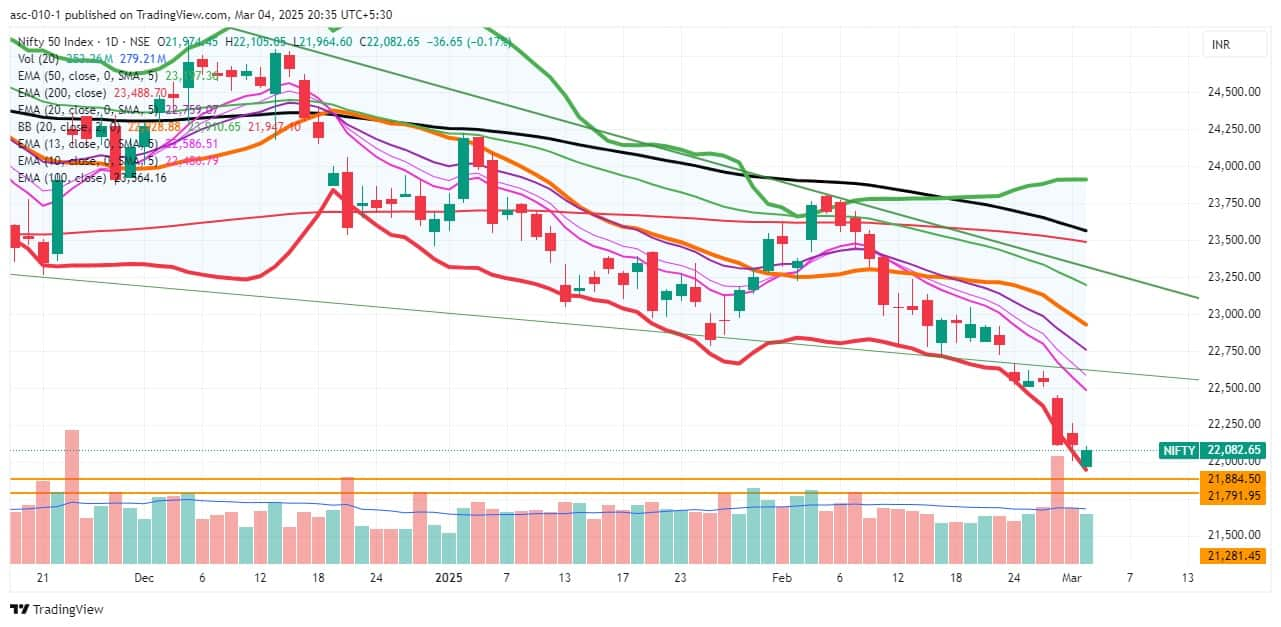
Here are 15 data points we have collated to help you spot profitable trades:
1) Key Levels For The Nifty 50 (22,083)
Resistance based on pivot points: 22,104, 22,138, and 22,191
Support based on pivot points: 21,997, 21,964, and 21,910
Special Formation: The Nifty 50 reported a bullish candle on the daily charts, as the closing was higher than the opening levels. However, sentiment remained favourable for bears. The formation of lower highs-lower lows, along with the momentum indicators RSI (Relative Strength Index at 21.79) in the oversold zone and MACD (Moving Average Convergence Divergence) below the zero line, signalled weakness.
2) Key Levels For The Bank Nifty (48,245)
Resistance based on pivot points: 48,354, 48,460, and 48,632
Support based on pivot points: 48,010, 47,903, and 47,732
Resistance based on Fibonacci retracement: 49,411, 50,373
Support based on Fibonacci retracement: 47,865, 46,078
Special Formation: The Bank Nifty rebounded from the lower line of the Bollinger Bands and closed 131 points higher, outperforming the Nifty 50. The index formed a bullish candlestick pattern with a minor upper shadow on the daily charts, indicating positivity, but there was some pressure at higher levels. The momentum indicator RSI showed an upward trend but remained in the lower band, while the MACD stayed below the zero line.
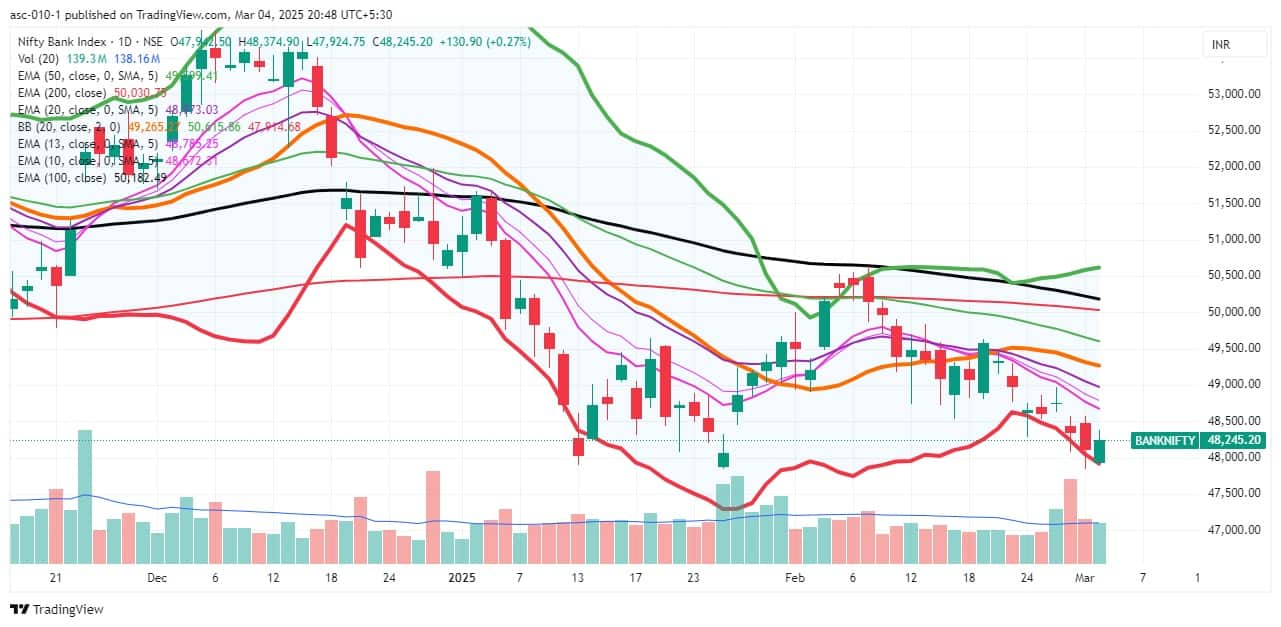
According to the weekly options data, the maximum Call open interest was seen at the 22,500 strike (with 1.21 crore contracts). This level can act as a key resistance for the Nifty in the short term. It was followed by the 23,000 strike (96.42 lakh contracts) and the 22,600 strike (92.06 lakh contracts).
Maximum Call writing was observed at the 22,200 strike, which saw an addition of 30.36 lakh contracts, followed by the 22,100 and 22,900 strikes, which added 19.62 lakh and 14.83 lakh contracts, respectively. The maximum Call unwinding was seen at the 23,000 strike, which shed 26.92 lakh contracts, followed by the 23,100 and 22,400 strikes, which shed 22.9 lakh and 21.38 lakh contracts, respectively.

On the Put side, the 21,500 strike holds the maximum Put open interest (with 93.65 lakh contracts), which can act as a key support level for the Nifty. It was followed by the 22,000 strike (84 lakh contracts) and the 21,900 strike (81.48 lakh contracts).
The maximum Put writing was placed at the 21,500 strike, which saw an addition of 26.07 lakh contracts, followed by the 21,400 and 22,000 strikes, which added 21.77 lakh and 15.99 lakh contracts, respectively. The maximum Put unwinding was seen at the 22,150 strike, which shed 6.42 lakh contracts, followed by the 22,200 and 22,300 strikes, which shed 5.4 lakh and 4.54 lakh contracts, respectively.

5) Bank Nifty Call Options Data
According to the monthly options data, the 50,000 strike holds the maximum Call open interest, with 12.91 lakh contracts. This can act as a key resistance level for the index in the short term. It was followed by the 49,000 strike (11.28 lakh contracts) and the 48,500 strike (6.53 lakh contracts).
Maximum Call writing was visible at the 50,000 strike (with the addition of 85,500 contracts), followed by the 48,500 strike (77,130 contracts) and the 49,000 strike (55,740 contracts). The maximum Call unwinding was seen at the 48,600 strike, which shed 25,530 contracts, followed by the 47,400 and 48,800 strikes, which shed 24,780 and 16,830 contracts, respectively.

6) Bank Nifty Put Options Data
On the Put side, the maximum Put open interest was seen at the 48,000 strike (with 10.77 lakh contracts), which can act as a key support level for the index. This was followed by the 47,000 strike (7.89 lakh contracts) and the 49,000 strike (7.45 lakh contracts).
The maximum Put writing was observed at the 48,000 strike (which added 1.6 lakh contracts), followed by the 48,200 strike (1.1 lakh contracts) and the 46,500 strike (1.15 lakh contracts). The maximum Put unwinding was seen at the 48,700 strike, which shed 19,320 contracts, followed by the 50,000 and 48,600 strikes which shed 14,640 and 8,040 contracts, respectively.

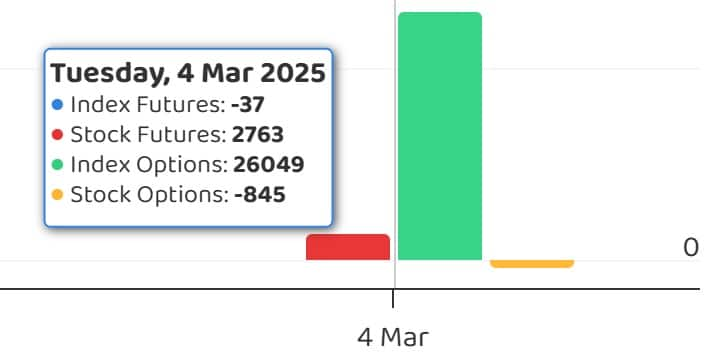
The Nifty Put-Call ratio (PCR), which indicates the mood of the market, climbed to 0.86 on March 4, against 0.81 in the previous session.
The increasing PCR, or being higher than 0.7 or surpassing 1, means traders are selling more Put options than Call options, which generally indicates the firming up of a bullish sentiment in the market. If the ratio falls below 0.7 or moves towards 0.5, then it indicates selling in Calls is higher than selling in Puts, reflecting a bearish mood in the market.
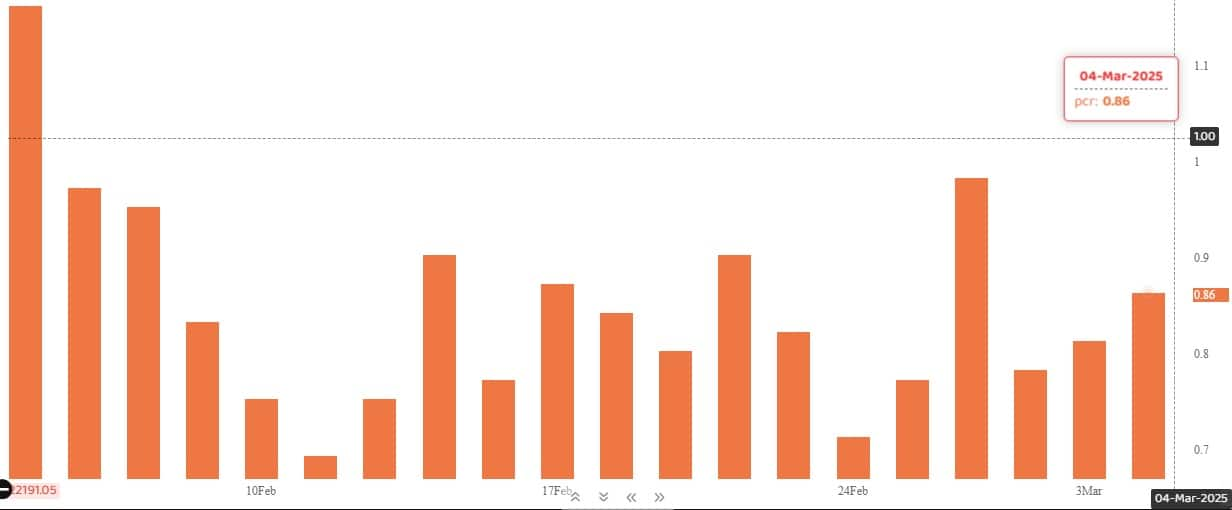
9) India VIX
The India VIX, the fear factor that measures expected market volatility, remained favourable for bulls, as it sustained below the 14 level, though it increased by 0.49 percent to the 13.83 zone.
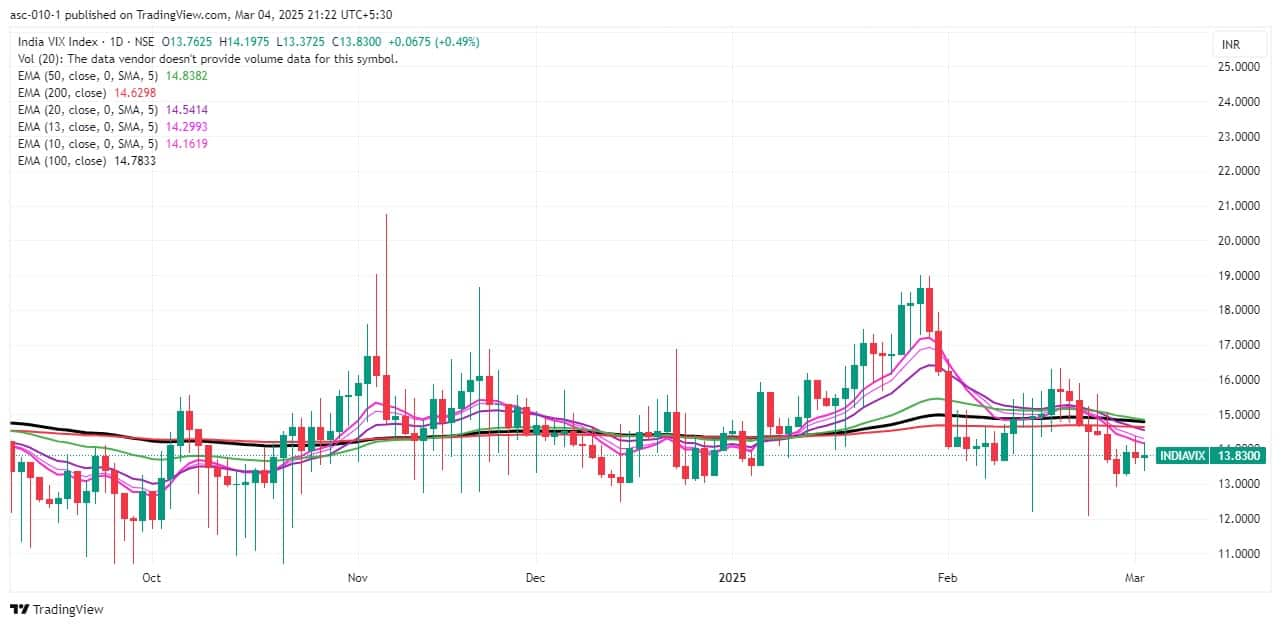
A long build-up was seen in 58 stocks. An increase in open interest (OI) and price indicates a build-up of long positions.

11) Long Unwinding (36 Stocks)
36 stocks saw a decline in open interest (OI) along with a fall in price, indicating long unwinding.

12) Short Build-up (81 Stocks)
81 stocks saw an increase in OI along with a fall in price, indicating a build-up of short positions.
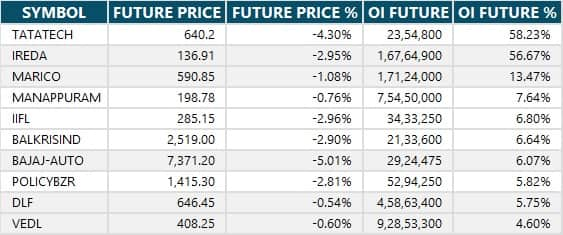
13) Short-Covering (45 Stocks)
45 stocks saw short-covering, meaning a decrease in OI, along with a price increase.

Here are the stocks that saw a high share of delivery trades. A high share of delivery reflects investing (as opposed to trading) interest in a stock.

Securities banned under the F&O segment include companies where derivative contracts cross 95 percent of the market-wide position limit.
Stocks added to F&O ban: Manappuram Finance
Stocks retained in F&O ban: Nil
Stocks removed from F&O ban: Nil
Disclaimer: The views and investment tips expressed by experts on Moneycontrol are their own and not those of the website or its management. Moneycontrol advises users to check with certified experts before taking any investment decisions.
Disclosure: Moneycontrol is a part of the Network18 group. Network18 is controlled by Independent Media Trust, of which Reliance Industries is the sole beneficiary.
Discover the latest Business News, Sensex, and Nifty updates. Obtain Personal Finance insights, tax queries, and expert opinions on Moneycontrol or download the Moneycontrol App to stay updated!
Find the best of Al News in one place, specially curated for you every weekend.
Stay on top of the latest tech trends and biggest startup news.